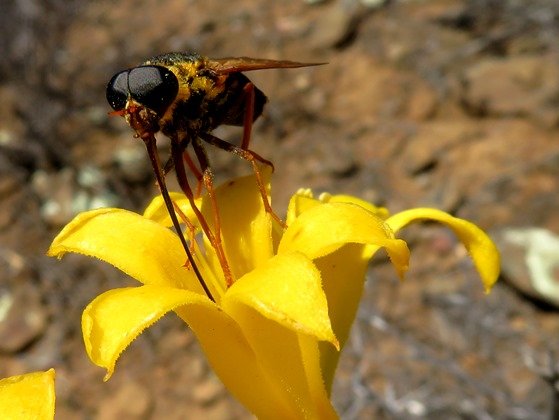Tylecodon cacalioides and fly with nectar siphon

Author: Ivan Lätti
Photographer: Thabo Maphisa
Imagine having a tongue longer than your legs! This special partner of Tylecodon cacalioides is a strangely endowed fly. It is the long-proboscid horse-fly scientifically known as Philoliche tumidifacies.
The fly has large, compound eyes, a triangular head, V-shaped antennas consisting of three segments and a truly long proboscis, more than useful when dealing with long-tubed flowers. The male horsefly’s eyes almost touch as in the photo, the eyes of the female are further apart.
Adult long-proboscid horseflies feed on nectar and other plant exudates. Only the female horsefly bites animals (and people) to obtain sufficient protein from blood to produce their eggs.
The males have weaker mouthparts. They avoid blood sports, while consorting with flowers, thus staying out of trouble (Vlok and Schutte-Vlok, 2015; Holm, 2008; R. Gess (Sep. 2001): Tylecodon cacalioides and a long-proboscid horse-fly. Veld & Flora; Leistner, (Ed.), 2000; iNaturalist; Wikipedia).

